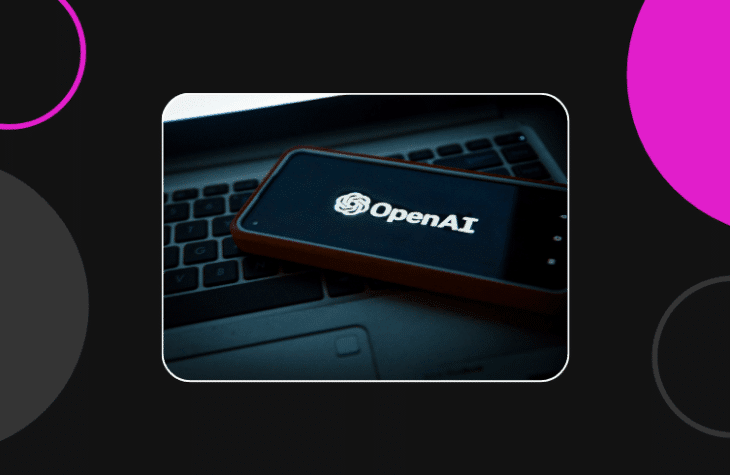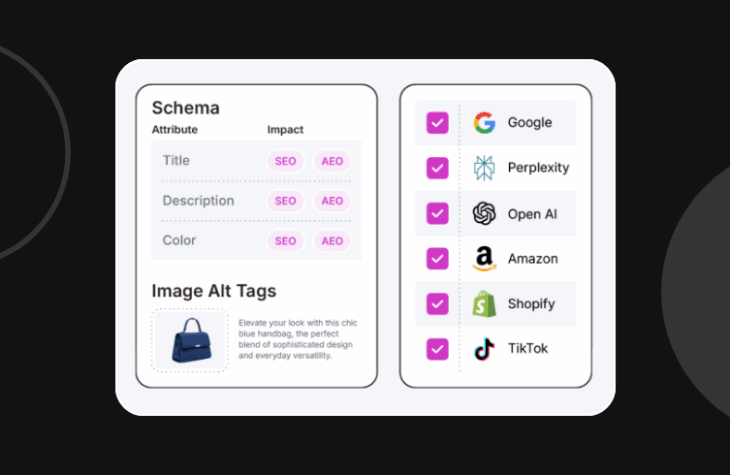Why AI-Driven Inventory Forecasting is the Future of Inventory Management

Traditional inventory forecasting methods are insufficient to keep up with today’s evolving, complex, multi-channel retail landscape.
AI-powered forecasting uses real-time data, machine learning, and external signals to improve demand accuracy and reduce stockouts.
A modern OMS provides AI with a unified data infrastructure to deliver precise, proactive inventory insights, a strategy that has enabled retailers using AI to see up to 30% inventory reductions and significant improvements in logistics and procurement efficiency.
Forecasting inventory has always been part science, part guesswork. Even with historical data and recurring trends, your team may still feel half-blind when demand shifts or new channels emerge.
Growing complexities, such as multi-channel sales, volatile demand, and supply-chain disruptions, push traditional forecasting methods beyond their limits. Inventory accuracy in U.S. retail operations averages just 63%, leaving huge gaps in visibility and performance.
Retailers are turning to AI-powered systems that learn, adapt, and predict to keep up. Unlike static tools, these systems continuously analyze real-time data across locations and channels, spotting patterns your teams might miss and gaining insights that lead to better decisions.
In this article, we’ll review what AI inventory forecasting is, why traditional tools aren’t adequate in today’s AI-powered tech landscape, and how fabric’s AI-powered OMS can create a more resilient, accurate inventory strategy to give you the real-time information you need to act faster, stock smarter, and stay ahead of the demand.
Why inventory forecasting is so challenging today
Your retail teams may face a minefield of forecasting challenges as your business scales across multiple channels and markets. Here’s what’s making it so challenging:
- Demand volatility across multiple channels: Customers shop online, in-store, and via marketplaces, each with different rhythms. This makes forecasting unpredictable and prone to errors.
- Seasonal swings, promotions, and sudden demand spikes: Holiday rushes, flash sales, and marketing campaigns trigger sharp demand shifts that standard reorder methods struggle to follow.
- Long and variable supplier lead times: Global sourcing introduces unpredictability. In the U.S., the first-attempt delivery times averaged at 3.6 days in 2021, and delays can derail replenishment plans.
- Siloed data and weak historical insights: You’d lack accurate visibility without unified data.
- Reactive decision making: Many teams still rely on spreadsheets or fixed reorder thresholds. These methods fail to adjust when demand trends change, leading to overstock or stockouts.
Traditional inventory management tools, such as spreadsheets or static reordering rules, are inadequate to handle today’s complexity. They lack agility, struggle to account for cross-channel variables, and don’t learn and adapt over time.
Integrating reliable, time-based data through a modern OMS like fabric gives you the visibility and flexibility you need to forecast more effectively and break free from reactive operations.
What is AI inventory forecasting?
AI inventory forecasting uses machine learning algorithms to analyze historical sales data, seasonal patterns, and real-time variables to more accurately predict future demand.
Key characteristics:
- Learns from historical sales data to identify purchase patterns over time.
- Adapts to seasonality, product life cycles, and demand shifts for smarter replenishment planning.
- Responds to external signals such as weather, holidays, or marketing events.
- Continuously improves over time through feedback from real-world sales and fulfillment outcomes.
Tangible outcomes
AI forecasting delivers measurable results that impact both profit margin and business efficiency:
Higher forecast accuracy → fewer stockouts and reduced overstock
AI models learn from historical sales and adapt in real time, helping you avoid both understocking and overordering. In fact, companies using AI for forecasting have seen accuracy improve from 60% to 80%, translating to better margins and fewer lost sales.
Reduced carrying costs → lower holding costs and fewer markdowns
By right-sizing inventory levels, AI cuts the need to overstock safety inventory. McKinsey estimates that AI can reduce overall inventory levels by 20-30%, freeing up cash and reducing the need for last-minute markdowns.
Improved product availability → happier customers and fewer lost orders
AI doesn’t just optimize for inventory; it ensures that your products are where your customers need them, when they need them. Retailers using AI-driven forecasting can reduce product unavailability by up to 65%, improving inventory availability.
Smarter purchasing → better supplier planning and optimized reorder timing
AI insights can guide your purchasing teams on when and how much to reorder, considering lead times, promotions, and demand shifts. This cuts down on waste, improves supplier relationships, and leads to faster reactivity across the chain.
Faster decision-making → real-time visibility and recommendations
Traditional forecasting methods are static, but AI continuously learns and updates in response to changing data based on evolving trends. This agility allows your teams to act quickly. According to McKinsey, AI can reduce logistics costs by up to 20% and procurement costs by up to 15%, directly boosting operational efficiency and profitability.
How AI forecasting outperforms traditional forecasting models
| Feature | Traditional forecasting | AI-powered forecasting |
| Logic/Input | Static rules and manual entries—prone to human errors | Self-learning models trained on real-time and historical data |
| Trend adaptability | Can’t respond quickly to changes or unexpected events | Continuously adjusts to shifting demand patterns and conditions |
| Data approach | Relies mainly on past-sales figures or simple spreadsheets | Uses multivariate analysis, pattern recognition, and external signals (e.g., weather or marketing) |
| Safety stock handling | One-size-fits-all buffer stock levels | Dynamically adjusts safety stock based on real-time behavior and alerts |
AI forecasting eliminates reliance on guesswork and paper-based models. Because it continuously learns from real-world sales signals, it dramatically reduces overstocking and stockouts.
Models like demand sensing, which feed real-time signals, have improved forecast accuracy by 20-50% and raised operational efficiency by up to 65% compared to static methods, resulting in better product availability, fewer markdowns, and smarter capital allocation.
Major U.S. retailers like Target, Walmart, and Home Depot are now investing heavily in AI-based forecasting tools to predict shortages and rebalance inventory, moving from reactive to proactive operations.
How an OMS enables better forecasting with AI
A modern OMS like fabric can bring real-time inventory, order, and channel data into one unified hub, empowering AI to generate actionable predictions. Some key functions of an OMS in supporting AI forecasting are:
- Centralized real-time inventory data: It captures live stock levels from all channels, ensuring the AI model has accurate, unified data, eliminating silos and enabling more reliable forecasts.
- Feeding consistent and clean data into AI models: Since the OMS syncs orders and stock data across all points of sale, fulfillment, and returns, AI algorithms can make precise predictions based on complete historical trends and real-time updates.
- Supports automated replenishment and exception handling: Forecast-driven alerts and reorder triggers can empower your teams to act proactively, whether closing low-stock gaps or reallocating inventory before stockouts.
- Enables smarter purchasing and merchandising decisions: Clear, AI-enhanced recommendations reduce reliance on guessing. Instead of making assumptions and guesses, you can rely on systematic, data-driven insights.
When should you consider adopting AI inventory forecasting?
If any of the following scenarios feel familiar, it’s time to explore AI-powered forecasting as a part of your OMS setup:
- Frequent overstocking or understocking: Striking the right balance with manual spreadsheets is challenging, especially when demand shifts rapidly or inventory data is fragmented.
- Managing inventory across multiple channels/locations: When your stock spans multiple stores, warehouses, dropshippers, and third-party partners, manual methods fall short, resulting in silos, inefficiency, and poor visibility.
- Reliance on a spreadsheet or assumptions: Planning and forecasting stocking requirements based on assumptions or manually updated spreadsheets can’t adapt to real-world variability.
- Manual forecast updating takes long hours: Manual planning consumes valuable hours, time that could be saved with AI-driven replenishment insights and automation.
- Plan to scale or enter new markets without increasing risk: Without scalable forecasting tools, launching new products or SKUs (stock-keeping units) or entering new markets multiplies complexity and the risk of overstocking.
Build a smarter inventory strategy with AI forecasting
The future of inventory management lies in proactive, intelligent, and adaptive stocking. Embracing AI forecasting can gain you the agility to anticipate demand, optimize stock levels, and reduce overstock and stockout before they happen.
When you combine AI-powered forecasting with a modern, composable OMS, your inventory planning can become a strategic advantage, giving you a competitive edge in the market.
Contact us to elevate your inventory planning and learn more about how fabric’s OMS can give you the real-time visibility, predictive insights, and confidence to meet customer demand across channels.

Digital content editorial team @ fabric






